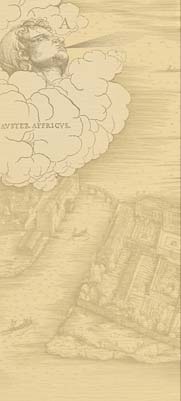Ships and Shipbuilding: Why Ships?
Michael wasn't a shipbuilder. Why did he include so much about ships in his manuscript?
Outfitting
The best answer is suggested by a line in a contemporary manuscript written by a trumpeter in the Venetian navy named Giorgio Trombetta of Modone. This unpublished manuscript is in the British Library, with the call number Ms. Cotton Titus A XXVI. Giorgio insisted that:
Nobody can rig any vessel or lateener, if first the man does not know his measurements of the vessel, because a vessel is better rigged by seeing the measurements than if they are told by word of mouth.
Michael's manuscript suggests why this is so: The length of much of the rigging was determined by proportion. The mast was proportional to the beam; the yards, stays, and shrouds proportional to the mast; the sails to the yard, and so on. Most of this could be dealt with by the rule of three, but a sailor still had to know the measurements of his ship in order to make the calculations.
Why should so much care be taken with the rigging and equipment? Beyond the obvious operation and safety issues, it was the Venetian custom to supply galleys to merchant and navy captains "bare," with a hull, a mast, several anchors, but not much more. It was the responsibility of the captain to make sure his galley was properly rigged and equipped, usually at his own expense (or that of his investors). The cost of outfitting a ship was enormous, quite possibly equal to the cost of building the hull in the first place. Accordingly, enormous care had to be taken when rigging and outfitting a ship for sea to keep the costs down as much as possible.
Michael spent much of his professional life as the person who did the rigging and then as the officer responsible for seeing his ship were rigged properly. He needed a vast knowledge of ship details, and his commanders needed his knowledge for reasons of safety, efficiency, and economy.
Design disputes
The shipbuilding part of Michael's manuscript has a didactic element. He says he will teach you everything you need to know in order to rig and equip and ship. But the text was copied from somewhere else, and its contents have the feel of a government document, with its long, bureaucratic lists of dimensions and equipment.
The original document may have been generated in the Venetian Arsenal as a result of disputes over ship design that took place during Michael's career. One dispute concerned Theodore Baxon, one of the master shipwrights of the Arsenal who may have been originally from Rhodes. His light galleys were so prized that the Venetian government decided to preserve them as models to be copied, much to the annoyance of other master shipwrights.
Another thorny issue was the design of commercial galleys. There was ongoing debate about how to increase their limited cargo capacity without compromising the good sailing qualities they already had.
As a person who spent a major portion of every year sailing on galleys, Michael was surely interested in design issues for their own sake.
Mathematics
It's also possible that Michael was interested in these documents because of his intense interest in mathematics.
It's not that the mathematics involved was complicated. Most of it concerned proportions that could be handled by the rule of three. But a slightly earlier Venetian abacus manuscript in Bergamo (Bergamo, Biblioteca Civica "Angelo Mai", M 334) contains similar material, organized as a series of problems in the application of mathematics, quite like the kinds of problems Michael included in the mathematical part of his manuscript. This suggests that there was interest in applying math to ships that, for Michael and others, may have started off as recreational and then become more serious.
< Sails and Rigging | Toolkit >











